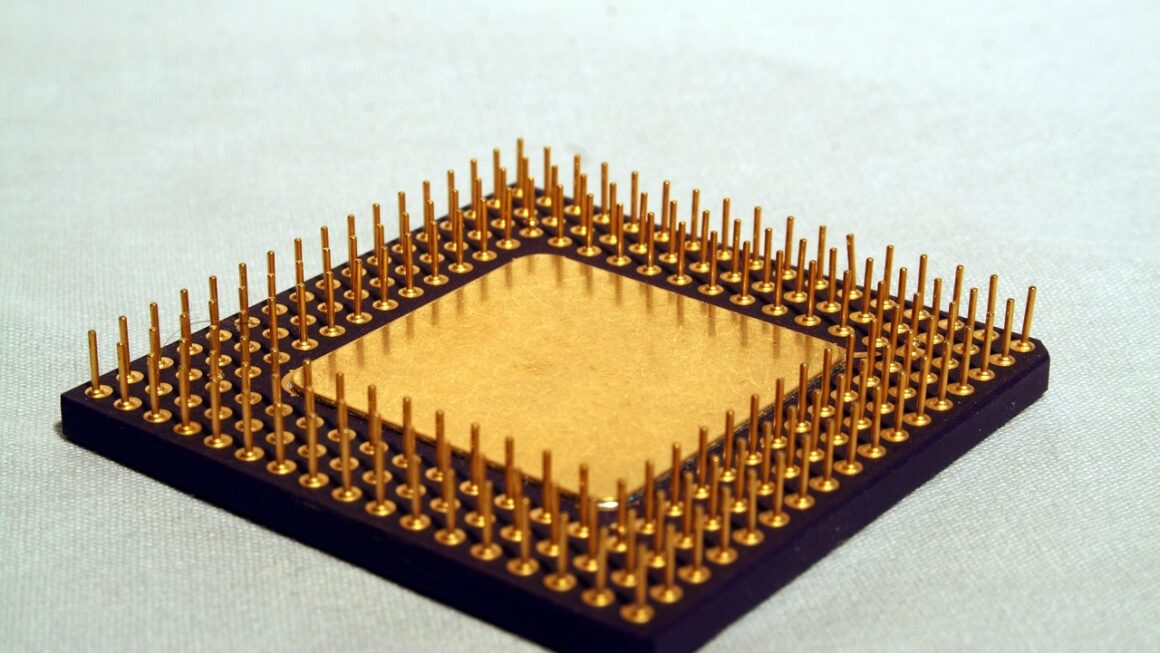The allure of gaming on the go is undeniable. For decades, handheld consoles have captivated gamers, offering portable entertainment that fits in your pocket or bag. From humble beginnings with pixelated graphics and simple gameplay to the powerful, feature-rich devices of today, the world of handheld gaming continues to evolve and innovate. Whether you’re a seasoned gamer or new to the scene, understanding the landscape of handheld consoles is essential for making informed gaming choices.
The Evolution of Handheld Consoles
Early Days: Pioneering Portability
The journey of handheld consoles began in the late 1970s with simple electronic games like Mattel’s Auto Race and Merlin. However, the real game-changer arrived in 1979 with the Milton Bradley Microvision, the first handheld game console to use interchangeable cartridges. While limited by its small screen and few games, it paved the way for future innovations. Then, in 1989, Nintendo released the Game Boy, which quickly became a global phenomenon.
- The Game Boy’s success was due to several factors:
Affordable price point
Durable design
Long battery life
A compelling launch title in Tetris
- Other notable early handhelds included the Atari Lynx (1989), the first color handheld console, and the Sega Game Gear (1990), which boasted superior graphics to the Game Boy but suffered from poor battery life.
The Rise of Color and 3D
The late 1990s and early 2000s saw significant advancements in handheld technology. Color screens became standard, and 3D graphics started to emerge.
- The Game Boy Color (1998) brought vibrant colors to the Game Boy library, revitalizing the system and extending its lifespan.
- The Neo Geo Pocket Color (1999) was another contender, featuring a clicky joystick and a strong focus on fighting games.
- The Game Boy Advance (2001) marked a significant leap in processing power, allowing for near-SNES quality graphics on the go.
- Nintendo DS (2004) introduced dual screens, one of which was a touchscreen, revolutionizing handheld gameplay and introducing innovative titles like Nintendogs. The DS sold over 154 million units worldwide, making it the best-selling handheld console of all time.
- Sony entered the handheld market with the PlayStation Portable (PSP) in 2004. The PSP boasted impressive graphics, a sleek design, and multimedia capabilities, offering a premium handheld experience.
Modern Handhelds and the Future
The modern handheld landscape is shaped by the Nintendo Switch and the rise of mobile gaming.
- The Nintendo 3DS (2011) continued Nintendo’s dominance, offering glasses-free 3D visuals and a large library of games. However, sales were lower than the DS, partly due to the increasing popularity of smartphones.
- Sony’s PlayStation Vita (2011) was a powerful handheld with a stunning OLED screen and innovative features like a rear touchpad, but it struggled to gain traction due to a lack of first-party support and competition from mobile gaming.
- The Nintendo Switch (2017) is a hybrid console that can be played on a TV or as a handheld, offering a seamless gaming experience on the go. Its success demonstrates the continued demand for dedicated gaming hardware.
Choosing the Right Handheld Console
Key Factors to Consider
Selecting the perfect handheld console depends on individual preferences and gaming priorities. Here are some key factors to consider:
- Game Library: What types of games do you enjoy? Research the available games for each console to ensure it has titles that appeal to you.
- Price: Handheld consoles range in price from budget-friendly options to premium devices. Consider your budget and how much you are willing to spend.
- Portability: How important is portability to you? Consider the size and weight of the console and how easily it fits into your bag or pocket.
- Battery Life: Battery life is crucial for on-the-go gaming. Look for consoles with long battery life, especially if you plan on playing for extended periods.
- Features: Do you value features like online multiplayer, streaming services, or backward compatibility? Consider which features are important to you.
- Ergonomics: How comfortable is the console to hold and play for extended periods? Consider the size and shape of the console and the placement of the buttons and controls.
Comparing Current Options
- Nintendo Switch: The Switch is a versatile console with a large library of games, including first-party titles like The Legend of Zelda: Breath of the Wild and Super Mario Odyssey. It can be played on a TV or as a handheld, making it a great option for gamers who want both portable and home console experiences.
- Steam Deck: A powerful handheld gaming PC developed by Valve, allowing you to play your Steam library on the go. It is more expensive than the Switch, but offers a wider range of games and customization options.
- Retroid Pocket/Anbernic Devices: These are emulation-focused handhelds, offering access to a vast library of retro games from various consoles and platforms. They’re typically more affordable than the Switch or Steam Deck but require some technical know-how to set up.
- AYANEO Devices: High-end Windows-based handheld gaming PCs, often with powerful processors and stunning displays. They offer a premium gaming experience but come with a significantly higher price tag.
Tips for Buying Used Handhelds
- Check the Condition: Carefully inspect the console for any signs of damage, such as scratches, cracks, or missing buttons.
- Test the Functionality: Test all the buttons, ports, and features to ensure they are working correctly.
- Verify the Screen: Check the screen for any dead pixels, discoloration, or backlight issues.
- Ask About Battery Life: Inquire about the battery life of the console and if it holds a charge properly.
- Buy from Reputable Sellers: Purchase from reputable sellers with good reviews and return policies.
Handheld Gaming Accessories
Must-Have Accessories
Enhancing your handheld gaming experience often involves investing in accessories.
- Protective Case: A protective case is essential for safeguarding your console from scratches, bumps, and drops.
- Screen Protector: A screen protector helps prevent scratches and smudges on the screen.
- Headphones: Headphones provide immersive audio and allow you to game without disturbing others.
- Portable Charger: A portable charger ensures that you can keep gaming even when you’re away from a power outlet.
- Grips: Grips can improve the ergonomics of the console and make it more comfortable to hold for extended periods.
- Extra Controllers: For the Switch, an extra set of joycons or a pro controller can enhance multiplayer experiences.
Optimizing Your Gaming Experience
- Customize Your Controls: Many handheld consoles allow you to customize the controls to suit your preferences. Experiment with different control schemes to find what works best for you.
- Adjust Display Settings: Adjust the brightness, contrast, and color settings to optimize the display for your viewing environment.
- Manage Storage Space: Regularly clear out unnecessary files and games to free up storage space on your console. Consider using a microSD card to expand storage capacity.
- Update Firmware: Keep your console’s firmware up to date to ensure you have the latest features and bug fixes.
- Utilize Online Resources: Take advantage of online resources such as forums, guides, and tutorials to learn tips and tricks for your console and games.
The Impact of Mobile Gaming
The Rise of Smartphone Gaming
The rise of smartphones has significantly impacted the handheld gaming market. Smartphones offer a convenient and versatile platform for gaming, with a vast library of games available on app stores.
- Accessibility: Smartphones are readily available and often more affordable than dedicated handheld consoles.
- Variety: App stores offer a wide variety of games, from casual puzzle games to complex RPGs.
- Convenience: Smartphones are always with you, making it easy to play games on the go.
- Free-to-Play Games: Many smartphone games are free to play, making them accessible to a wider audience.
The Convergence of Handheld and Mobile
Despite the popularity of smartphone gaming, dedicated handheld consoles still offer advantages.
- Dedicated Controls: Handheld consoles have dedicated buttons, joysticks, and touchpads, which provide a more tactile and precise gaming experience compared to touchscreens.
- Optimized Performance: Handheld consoles are designed specifically for gaming, offering optimized performance and graphics.
- Exclusive Titles: Many popular game franchises are exclusive to handheld consoles.
- Ergonomics: Handheld consoles are designed to be comfortable to hold and play for extended periods.
- Ecosystem: Dedicated handheld consoles tend to have a strong first-party ecosystem, offering more exclusive and high-quality titles.
Coexistence and Innovation
The handheld and mobile gaming markets are not mutually exclusive. They can coexist and drive innovation.
- Hybrid Consoles: The Nintendo Switch is a successful example of a hybrid console that blurs the lines between handheld and home console gaming.
- Mobile Game Ports: Many popular mobile games are ported to handheld consoles, and vice versa.
- Cloud Gaming: Cloud gaming services allow you to stream games to your smartphone or handheld console, expanding the range of available games.
- Mobile Gaming Accessories: Accessories such as gamepads and grips can enhance the smartphone gaming experience.
Conclusion
Handheld consoles have come a long way since their humble beginnings, evolving from simple electronic games to powerful, feature-rich devices. Despite the rise of mobile gaming, dedicated handheld consoles continue to offer a unique and compelling gaming experience. When choosing a handheld console, consider factors such as game library, price, portability, battery life, and features. By understanding the landscape of handheld gaming and the impact of mobile gaming, you can make informed choices and find the perfect console to suit your gaming needs.




